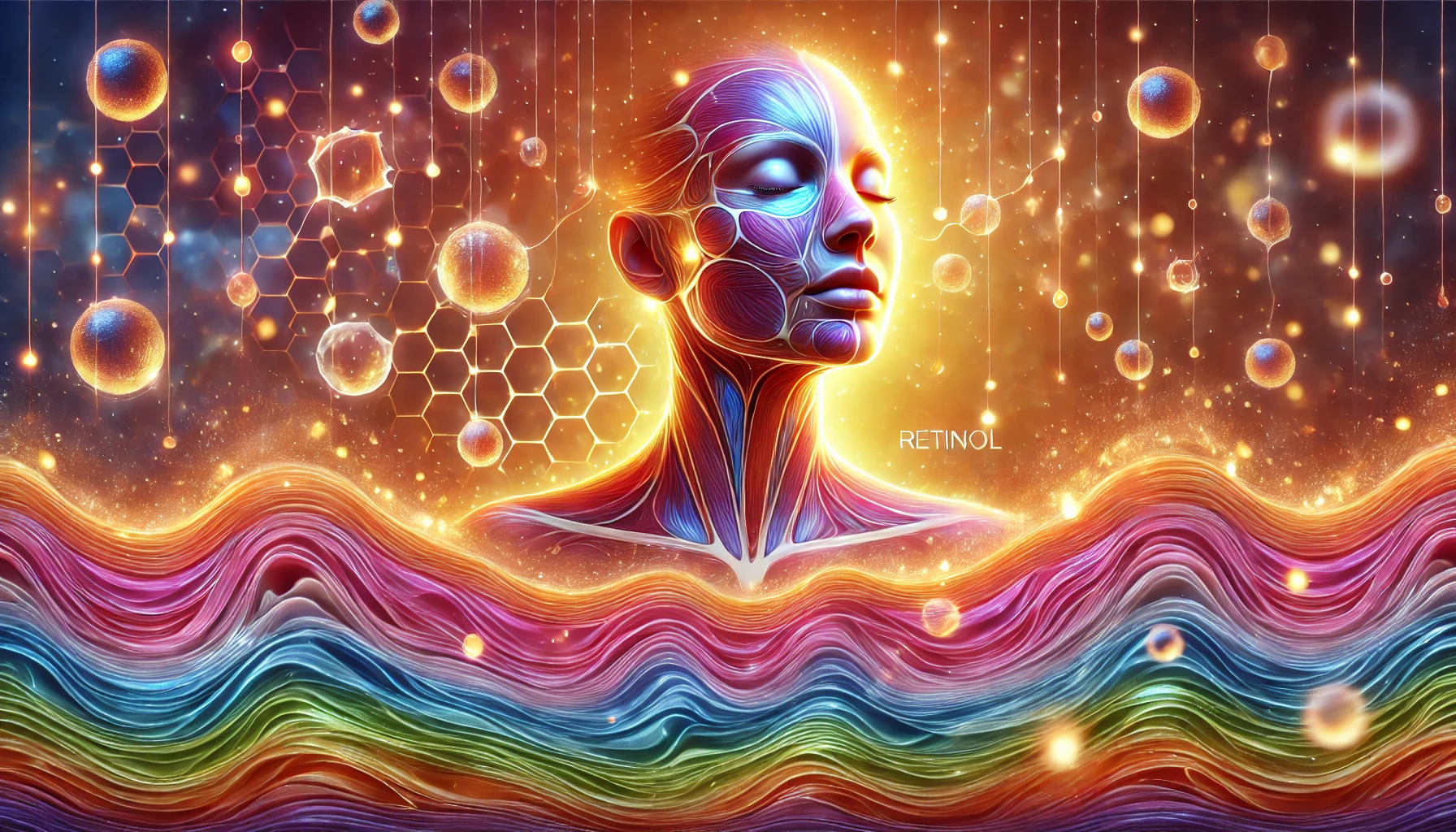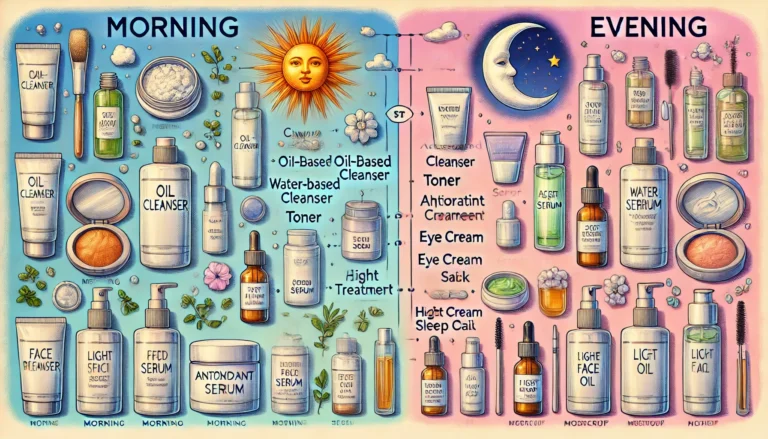How Retinol Transforms Your Skin: Benefits and Tips
Many people are wary of retinol due to its reputation for causing irritation or sensitivity, but with the proper understanding and approach, its powerful benefits can easily outweigh the concerns. The key is to know how retinol works, what it targets, and how to integrate it into your routine without fear. This article will provide a detailed overview of retinol’s benefits, its potential side effects, and how to avoid common pitfalls when using it.
What Does Retinol Do?
Retinol is not just another skincare ingredient; it plays a critical role in maintaining and improving the skin’s health. Unlike products that simply exfoliate or hydrate the skin’s surface, retinol goes deeper, targeting the middle layer of your skin—the dermis. Neutralizing free radicals that can accelerate skin aging promotes the regeneration of skin cells. This process boosts collagen and elastin production, which creates a noticeable plumping effect. Over time, this can help reduce the appearance of:
- Fine lines and wrinkles: Retinol works from within to smooth out the skin’s surface.
- Enlarged pores: Retinol minimizes the visibility of large pores by encouraging cellular turnover, creating a more refined complexion.
But what does retinol do beyond its anti-aging effects? Retinol is also an effective treatment for mild acne, helping to clear clogged pores and prevent future breakouts. However, for more severe acne, more potent prescription retinoids might be required.

What Is Retinol?
To fully grasp retinol, it’s essential to understand that it is a form of vitamin A. Retinol is available over-the-counter (OTC) and serves as a gentler alternative to prescription retinoids. Despite being milder, it’s still the most robust version of retinoids you can purchase without a prescription. It’s an excellent choice for anyone looking to target multiple skin concerns, such as fine lines, wrinkles, and acne, without needing medical-grade treatments.
While retinol is gentler, it still works effectively because it gets converted into retinoic acid once absorbed by the skin. This conversion is what gives it the ability to increase cellular turnover and boost collagen production. Unlike some skincare products that only focus on surface-level issues, retinol works from within, offering more profound and more sustainable improvements.
Retinol Versus Retinoids: Understanding the Difference
Though often used interchangeably, retinol and retinoids are not the same. Retinol, an over-the-counter (OTC) product, is a milder vitamin A derivative than prescription retinoids. These prescription-strength formulations, such as tretinoin, are significantly more potent but have a higher risk of irritation. In contrast, retinol is the most powerful version of retinoids available OTC, stronger than alternatives like retinaldehyde and retinyl palmitate but still more gentle than its prescription counterparts.
This makes retinol the go-to option for people seeking retinol benefits without the hassle of getting a prescription or dealing with more severe side effects.
The Mechanism of Retinol: A Deep Dive into Its Effects
Retinol operates much more profoundly than many typical skincare products, reaching the dermis, where it can initiate long-term skin texture and appearance improvements. Once absorbed into the skin, retinol converts to retinoic acid, stimulating skin cells to turn over faster than they would naturally. This leads to a more youthful complexion by encouraging the skin to shed old cells and produce new, healthier ones.
While some anti-aging products aim to scrub away dead skin cells on the surface, retinol’s real power lies in its ability to stimulate your skin’s natural renewal processes from beneath the surface. As your skin produces more collagen and elastin, it becomes firmer and more resilient, making wrinkles, fine lines, and even hyperpigmentation appear less pronounced.

What Skin Conditions Does Retinol Treat?
The benefits of retinol for the skin are widely acclaimed, particularly for addressing a host of skin concerns associated with aging and sun damage. Below are some of the primary issues it targets:
- Fine lines and wrinkles: These common signs of aging are visibly reduced as retinol promotes collagen production and skin renewal.
- Sunspots and photoaging: Sun damage can manifest as discoloration and rough texture, but retinol helps even out the skin tone and fade hyperpigmentation.
- Uneven texture: Retinol helps smooth rough patches and gives the skin a more uniform feel by accelerating cell turnover.
- Melasma and other pigmentation issues: Retinol can lighten dark spots over time, reducing the appearance of melasma and other hyperpigmentation forms.
For best results, retinol should be used consistently over several weeks, with visible improvements often starting to show after about 12 weeks of use.
Retinol Benefits and Side Effects: What You Should Know Before Using Retinol
Even though retinol benefits include reducing wrinkles and fine lines and improving skin texture, it’s essential to be aware of potential side effects, especially when introducing it into your routine. Common reactions include dryness, redness, and skin irritation, particularly when starting a new retinol product or using a higher concentration than your skin is accustomed to. Other possible side effects include:
- Itchiness and peeling: Some users experience flaking skin as their skin adjusts to the retinol’s exfoliating effects.
- Increased photosensitivity: Retinol can make your skin more sensitive to the sun, so it’s crucial to use it with a high-SPF sunscreen.
For those just beginning to use retinol, it’s often best to start slowly—using it every other night or even just twice a week. Over time, as your skin builds tolerance, you can gradually increase usage to nightly applications.
How to Reduce the Risk of Irritation
There are several strategies to mitigate the initial irritation that many people experience when starting retinol. First, wait about 30 minutes after washing your face before applying the product. This allows your skin to calm down and reduces the likelihood of irritation. Moisturizers can also be used on top of retinol to help keep your skin hydrated and less prone to peeling.
If the irritation persists, switch to a product with a lower concentration of retinol or speak with a dermatologist for personalized advice. Additionally, using only one retinol-containing product at a time can help minimize the risk of overloading your skin.

When to Consult a Dermatologist
Even though retinol is available without a prescription, there are times when it’s wise to consult a dermatologist before starting or continuing treatment. This is especially important if skin conditions like eczema or rosacea, as retinol can aggravate these issues. Pregnant individuals should also avoid retinol due to potential risks to the fetus.
Your dermatologist can also help if you’re not seeing the desired results from OTC retinol products. They might suggest a stronger prescription retinoid or explore other treatments like:
- Alpha-hydroxy acids (AHAs): These acids, like glycolic and lactic acid, can gently exfoliate the skin for a smoother texture.
- Beta-hydroxy acids (BHAs): Salicylic acid is a well-known BHA that can help reduce acne and refine skin texture.
- Chemical peels: These treatments remove the outermost layer of skin to reveal fresher, more even-toned skin beneath.
- Dermabrasion: A mechanical exfoliation method that smooths out skin texture.
- Fillers and laser treatments are more advanced options for treating fine lines, wrinkles, and discoloration.
Final Thoughts
Retinol remains one of the most effective ingredients for improving the appearance of aging and acne-prone skin, but its use requires care and attention. You can unlock a healthier, more radiant complexion by gradually introducing retinol into your skincare regimen and combining it with other beneficial treatments. Always consult a dermatologist to ensure you use the right concentration and product for your unique skin needs for the best results.




